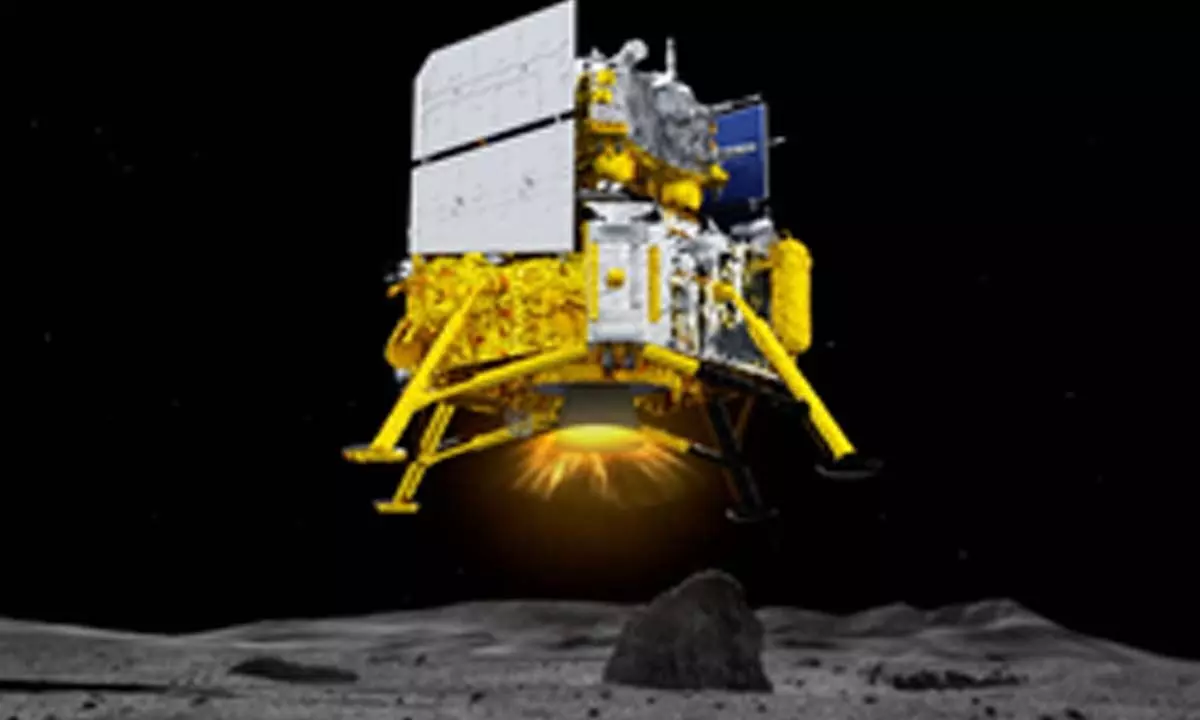China's Chang'e-6 takes off from Moon with first samples from lunar far side
Share :

The ascender of China's Chang'e-6 probe lifted off from the lunar surface on Tuesday morning, carrying samples collected from the Moon's far side, an unprecedented feat in human lunar exploration history.
Beijing: The ascender of China's Chang'e-6 probe lifted off from the lunar surface on Tuesday morning, carrying samples collected from the Moon's far side, an unprecedented feat in human lunar exploration history.
According to the China National Space Administration (CNSA), the ascender has entered a preset orbit around the Moon, Xinhua news agency reported.
The ascender took off at 7:38 a.m. (Beijing Time) from the Moon's far side. A 3,000-newton engine, after working for about six minutes, pushed the ascender to the preset lunar orbit, the CNSA said.
The Chang'e-6 probe, comprising an orbiter, a lander, an ascender, and a returner -- like its predecessor Chang'e-5 -- was launched on May 3. The lander-ascender combination, separated from the orbiter-returner combination on May 30, touched down at the designated landing area in the South Pole-Aitken (SPA) Basin on June 2.
The spacecraft finished its intelligent and rapid sampling work, and the samples were stowed in a container inside the ascender of the probe as planned, the CNSA said.
During sampling and packaging, researchers conducted simulated sampling in a ground lab, based on the detection data sent back by the Queqiao-2 relay satellite, providing important support for decision-making and operations in every link.
"The mission has withstood the test of high temperature on the far side of the Moon," the CNSA said.
It adopted two methods of Moon sampling, including using a drill to collect subsurface samples and grabbing samples on the surface with a robotic arm. It automatically gathered diverse samples at different sites.
The multiple payloads installed on the lander, including the landing camera, panoramic camera, lunar soil structure detector and lunar mineral spectrum analyzer, worked well and carried out scientific exploration as planned, the CNSA said.
The report said that the lunar soil structure detector analysed and judged the underground lunar soil structure of the sampling area, providing data reference for the sample drilling.
After the sampling was completed, a Chinese national flag carried by the lander was unfurled for the first time on the far side of the Moon.
Due to the different landing positions, the national flag display system of Chang'e-6 has been improved based on the Chang'e-5 mission.
Unlike takeoff on Earth, the ascender could not rely on a launch tower system. The lander acted as a temporary "launching pad."
The ascender is expected to carry out unmanned rendezvous and docking with the orbiter-returner combination in lunar orbit, and the samples will be transferred to the returner.
The orbiter-returner combination will orbit the moon, awaiting the optimal time to transfer back to Earth. When it approaches Earth, the returner carrying the lunar samples will re-enter the atmosphere, aiming for a touchdown at Siziwang Banner in north China's Inner Mongolia Autonomous Region, the CNSA said.













